The most organized power in the world is electricity if used in the right way. Electricity power is present everywhere in a never-ending quantity. For good results we need good plans and to make good plans we need a bright environment, and this is the job of electricity to brighten your home.
What if you are working on your plan, and suddenly the power cuts off? What if your precious time is wasted just because of electricity cut off? It can be due to any reason you are not responsible at all, but you have to face the consequences. It will never be your fault, but you have to pay for it. Being a smart person, you will find the way. The first and last idea would be to set up an inverter in your house. Inverter helps us in difficult situations when there is a power cut, and we need to do something meaningful. The source of power fulfills the basic necessity of power.
Knowing About Inverter
A house needs a supply of 220 volts of electricity to function correctly, and this power is called A.C. (alternating current). Your device, inverter, collect the direct current (D.C.) and converts it into alternating current. The source of direct current can be anything from where your inverter gets its power and supplies you the alternating current, which allows you to use your appliances and equipment using that same power supplied by the inverter. We must calculate the power provided by the inverter so that we can decide the best suitable inverter to purchase.
Keep an Eye on How Your Inverter Works.

Your inverter stores a certain amount of power in it for emergency use like power cut. Your inverter thus supplies you the backup so that you can use your essential appliances or equipment such as fans, phones, small devices, etc. this is the typical use of the inverter almost in every house. But you must know that in your home and your cars, trucks, boats, ambulances, and a few more, this inverter can convert the power in A.C. inverters and make it in different ways sized to work in a different environment.
Inverters also work according to your need and its size. So this can be a valuable suggestion for you that always calculates your need before buying an inverter. It will help you in getting the right size inverter to your home.
Different Types of Inverter
Various inverters have their name and functions and qualities. A significant difference can be found in rates also. Therefore, if you are ready to buy an inverter and are all set to go to the market, knowing about these inverters will help you in choosing the best one for your use.
There are three types of inverter which can be found very quickly in the market.
These inverters are as follows –
- Sine wave inverter.
- Modified sine wave inverter.
- Square wave inverter.
Sine Wave Inverter
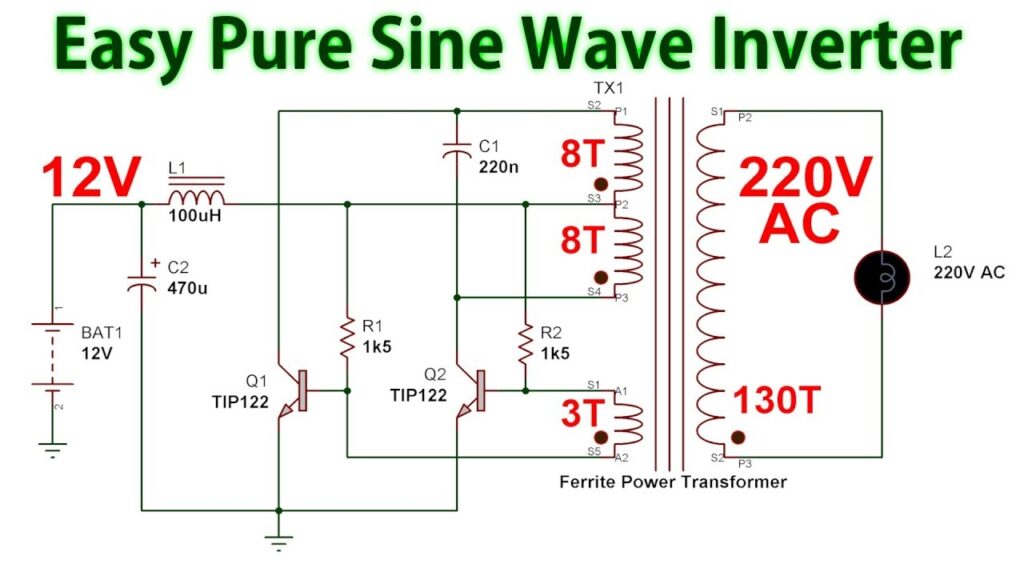
This inverter is known as the best choice for your house among all the inverters. Rotating A.C. machinery fitted in this inverter is the one that generates the power. These inverters are well known for handling heavy loads as most of your electrical appliances can be dependable on these.
This inverter is also known as one of the natural product by the rotating A.C. machinery. There is an excellent reason for bringing a sine wave inverter to your home, and that is most of the electric equipment which is sold in the market nowadays designed for your sine wave inverter. This advantage of sine wave inverter gives you a guarantee that all your electronic equipment and appliances will work to their full specification.
These inverters found to be the most expensive among all three, but investing in this will give you satisfaction.
Modified Sine Wave Inverter

This inverter is very much different from a sine wave inverter because of the structure. As sine wave inverter has Rotating A.C. machinery, so this modified sine wave inverter has a square-like waveform in it. It is not that efficient if compared with the sine wave inverter, but yes, one can get it in a cheaper amount than a sine wave, the efficiency of this inverter is worth it.
Your modified sine wave inverter will work well with most of your appliances, but there are chances of seeing a lack of power or efficiency with some instruments. Taking an example of a fan or a fridge, due to low ability, these may use more power from your modified sine wave inverter. Approximately one uses 20 percent of more energy in such cases.
This inverter may affect the brightness of your lights, and also you will experience some buzzing or murmuring sound. If you have any kind of electronic timer as a part of your appliances, it may also run slowly. Some examples are there like bread-makers or light-simmers, which may not work with this modified sine wave inverter.
If standing somewhere to buy an inverter and you have these two in front of you, you might choose the modified sine wave inverter and that just for one reason that this is cheaper than the sine wave inverter.
Square Wave Inverter
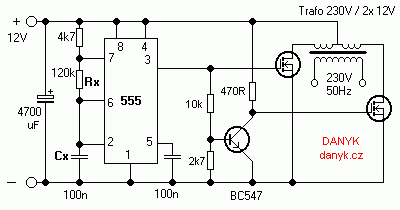
The two best inverters we discussed above are not the same. Square wave inverter is indeed the cheapest one you will find in the market, and that also available very quickly. There are very few options available in the market for these inverters. This inverter can run only in a few electronic things like any small tool, but loading it with anything else will be a horrible idea. In one line, this inverter is not as worthy as the other two discussed above.
We discussed the types of inverters, and now its turn to know something about their applications.
Applications of Inverters
What and where is the need?
We all are very familiar with this truth that the power cut is widespread in almost every state and city. To get an uninterrupted life and continuously going activities, we need to install an inverter at our place as it stores backup for us, which helps us in using our gadgets continuously also after a power cut.
Also, where high voltage and high current are present, we need to have an inverter there. The common thing is that one uses an inverter to convert direct current to alternating current.
Let’s have a look at an example that will make this clearer to you.
Example: Suppose you are living in a village with your family. Daily you might have a fear in your mind that the electricity may go any moment. You have your kids who find it challenging to do their homework in this situation as well. Your wife complains daily about this.
Hence, one day you decide to find a solution, and somehow you came to a result which tells you to buy an inverter. After doing your research, you choose to use sunlight as the source of your electricity. So you visited the market and bought an inverter and connect it to the solar panels.
Now during day time, your solar panel takes the energy from the sunlight and passes the power to the inverter. This power is the direct current that goes to your inverter, and your smart inverter converts it into A.C., i.e., alternating current. Now you use that supply for your domestic use. It is how the inverter makes your life more comfortable than before.
It was the need for an inverter. Also, you need to focus on the size that you require for your place. A straightforward way to find out what size of inverter you need is first counting your appliances and gadgets, which you will be using through the power of the inverter?
Then sum up the wattage of each of your devices and then compare it to the power output of the inverter you are planning to buy. In short, your inverter should be capable of handling the load of all the gadgets and appliances in your house. Not doing this may end up with sudden overloading on your inverter, and it may break down. Playing smart is the master key to live a quick and secure life.
Inverter v/s UPS
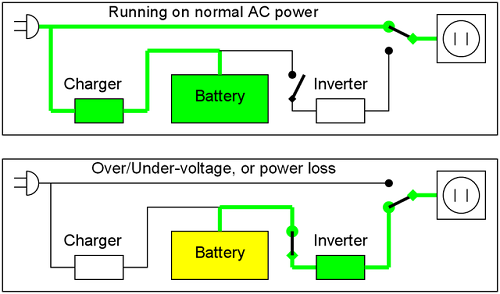
Inverters and UPS have a similarity in basic functioning, as both are power providers. There is a minor difference between UPS and inverter. This difference is related to that time in which the battery power activates after a cutoff. Only 3 to 5 milliseconds is taken by the UPS to shift to the battery power whenever any power cut takes place whereas an inverter takes 100 milliseconds for doing the same.
It is just like creating suspense for you to wait for a light to come. When you are sitting to choose in between these two, it is a difficult choice to make. But everything can be made accessible. You can do a simple trick by making a list of those appliances and gadgets and shortlisting those items you want to switch to power back up in no time.
If you have such devices that cannot be taken away from electricity for much time, then getting a UPS will be a smart decision. Still, if you think that getting an inverter can carry out things quickly, then it may become out as a more fashionable idea for you.
One suggestion would be there for you that, if you are in use of working on your computers a lot, then you must go for a UPS to save your essential data. You know very well that electricity never gives you any warning.
The tubular and, therefore, the flat batteries require regular replenishment of water. Counting on the sort of the cell and consequently, the invertor’s usage and the period of replacement can vary from one to three months, so maintain a calendar, preferably on your smartphone that alerts you to replenish the water.
The socket connections can rust because the water can spill over sometimes. Another factor that causes massive rusting is Humidity. The rust from Humidity affects the links of the inverter. You must apply grease on these connections because grease help prevents rusting. If there’s corrosion, you use a mixture of bicarbonate soda in a predicament to get rid of the rust.
Discharge the battery ultimately a minimum of once a month and charge it again. It’ll rejuvenate the electrolyte solution. Don’t connect massive loads to the inverter and avoid connecting refrigerators, air conditioners, washing machines, and water heaters.
You should place the inverter either vertically or horizontally on a flat surface. It is advised not to put it near the engine compartments like your motor. The inverter must be far away from moisture and water. Don’t keep the inverter in direct sunlight. Make sure that there’s ample ventilation within the room where you place your inverter.
Battery
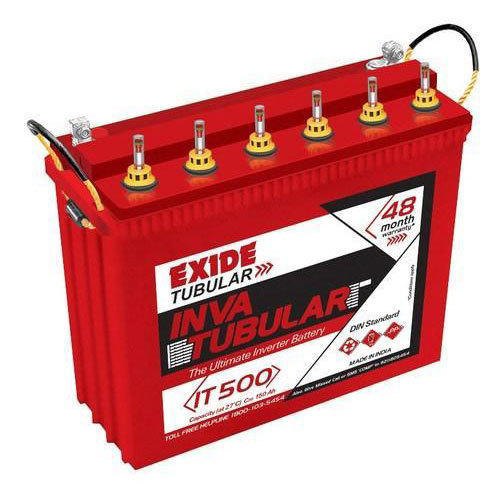
The battery has a broad definition for any of the fields. The battery is known as the backbone of any electrical items where there is a need for it. Here we are exploring more things about the battery of an inverter. The life of an inverter depends on the quality of its battery. The battery also affects the performances done by your inverter.
Batteries for inverters are designed in such a way so that it provides you with a smaller amount of current in a good flow for a long duration. Plates used in making a battery are less in these batteries than in other cells, resulting in a thinner size.
You will find many local batteries collection in the market. They may end up giving you poor efficiency, miserable lifetime, and also it will ask for high maintenance. Also, your safety level can be affected by this battery. To make everything clear about batteries, you need to go through the classification of cells mentioned below.
Types of Batteries
Flat plate (also known as Lead-acid batteries)
These batteries are the most common batteries used in inverters. A large amount of current produced by this kind of battery makes it better than other cells. Also, the best part of this battery is that these can recharge it when needed.
These batteries are known as the most economical battery if compared with others. If you talk about the weight part, this battery is lighter in weight. If you take care of your battery and keep its maintenance up to date, then it will serve you for 3 to 4 years, and this is for sure.
You need to check the level of electrolyte from time to time. These batteries require regular restoring of distilled water. The most crucial point you need to put in your mind is that you should not go too close to it while being charged as it may release some gasses while charging or while in use, which may be harmful. You can solve this problem by placing your inverter and battery at a right, ventilated place.
Tubular Plate Batteries
These are known to be the most popular and efficient battery. You will find these batteries having a sophisticated design with such excellent efficiency. These tubular batteries ask for low maintenance and survive for a long time. For having these benefits in only one battery, it is found costly in the market.
Just like flat batteries, tubular plate batteries also require replenishment of distilled water regularly. The restoring period of water may vary from cell to battery.
Maintenance-free Battery
These are different batteries from the other two. It is the lead-acid battery that sealed and gives you relaxation from checking the level of electrolyte. These batteries are known to be the safer one if compared with other batteries. When comparing is done about the lifeline, this battery has a shorter lifespan than other batteries. These are costly too.
Why does a UPS need a Battery?
We discussed UPS and battery in the beginning. What is the work of a UPS? UPS fully translated as an uninterruptible power supply is that electrical invention which comes in action when your electricity goes off.
Your UPS is generally used to save your hardware, such as your computers, data centers, telecom equipment, or other devices where unexpected power disruptions can cause injuries and fatalities and cause severe business disruptions or data loss. Your UPS units range in different sizes, from groups designed to protect only a single computer without any video monitor to massive units powering entire data centers.
Though power cutoff is not very common, they happen from different time to time and sometimes very rarely. It can happen after a bad thunderstorm, or any car crash that downs power lines or can also a power grid overload can cause a blackout, and even if it lasts for a short period. You have only two options to decide from, either Work right through a brief outage or secondly take precautions against a longer one with your backup battery idea, which prevents your computer from a sudden shutting off along with the power.
How do I finalize a suitable Inverter for my home?
Finding this out is very interesting and very easy. To find this out for you, let’s do a new calculation. It is considering that you need an inverter battery that provides backup for 8hrs for running appliances of load 426 VA (248 W).
Now applying a straightforward formula here,
Battery capacity equals Power requirement of the device (in V.A.) * Back up hours (in hours) / Battery Voltage (in volts)
For the lead-acid battery, battery voltage = 12 V.
Battery Capacity = (426 * 2) / 12 = XYZ Ah
In real, battery performance degrades with daily usage, so you are always recommended to buy a 5-10% higher capacity battery than others. It is the reason that battery with a capacity of 150 Ah will work. It is a tested and secure process.
If you still want to run 3 Fans of your house, three lights, 8 LEDs, and one television & a refrigerator for 2 hours during a power failure, you would need a 900 VA UPS and 150 Ah inverter battery.
Is this question coming in your mind that –
Would I need a Single battery or a Double battery would be fine?
Now just suppose your power back up requirement is X hours for the same power load as used in the above calculation.
Battery Capacity required is (426*4) / 12 = XYZ Ah ~ XXXAh
As you know, batteries are available between 60-200Ah, here you will need two batteries of 150Ah to provide the inverter power of 300 Ah. Both the batteries together create 24 V output; hence you need to choose UPS, which supports 24V input only.
How do I select the Ideal Battery?
The capacity of any of the battery also depends on the duration of the backup and the load. In this example, I have opted for a 400 VA inverter, just taking as an example. We need the backup for 4 hours when the cut off takes place. That’s why we need a V.A. value of 1600 as calculated.
The batteries are available in the market where you are struggling to get your appliances are just 12 volts in power. If you derive the Ah value of exactly 33, the batteries of inverters come with Ah values of 100, 120, 150, 200, and more.
In this case, a 100 Ah battery would suffice, so It is better to buy a higher configuration modulator as a matter of abundant precaution.
Some records of power assumptions just to clear your view.
T.V.

The traditional CRT TVs consume approx. 120 W whereas the LCD and the LED TVs to take up 50 – 150 Watts and 30 to 100 watts depending on their respective size
Electric Bulbs

You have these kinds of bulbs coming with capacities 25 Watts, 40 Watts, 60 Watts, and so on.
Computers

Depending on the different types of personal computers you have at your home, they consume between 120 and 250 watts nearby. The LCD monitors consume more than 150 watts whereas the conventional CRT monitors consume about almost 250 watts
One fan
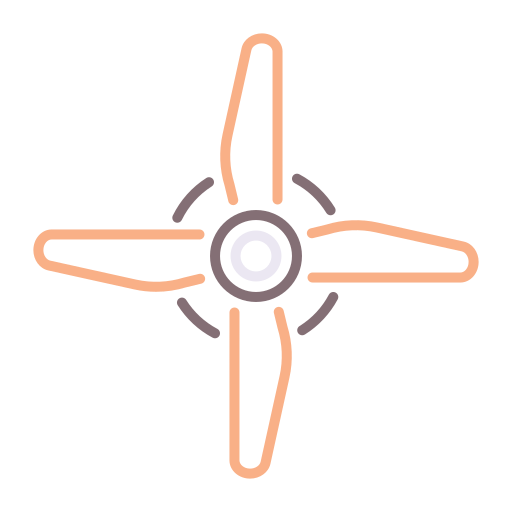
Approx. 75 to 90 Watts
1 CFL Bulb

This kind of lamps come in various power consumption capacities such as 10 Watts, 20 Watts, and so on
Set-Top Boxes
SD Set-top boxes – 8 W, HD Set-top boxes – 18 Watts, and the HD DVR Boxes – 25 W
Mixers and Grinders
Approx. 300 to 400 watts
Home Theatres and Gaming Consoles

These devices consume variable amounts of electricity depending on their usage and size. We must assume a safe figure of around 100 watts
Air Coolers
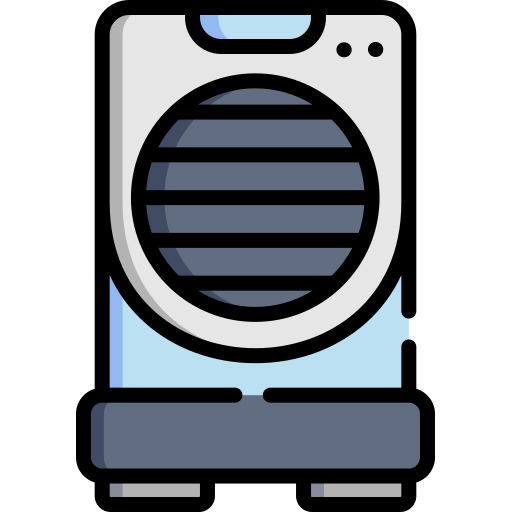
About 250 to 300 watts
Induction Cookers

These are of high power-consuming appliances in the range of somewhere around 1000 to 1500 watts
Mobile Phone Chargers and Wi-Fi routers

These appliances consume about 5 watts or less
V.A. or Volt Ampere
VA, also known as volt-ampere, is the unit used for the apparent power in an electrical circuit. The evident power equals the product of RMS (root mean square) voltage and RMS current also. In direct current (known as D.C.) circuits, this product is equal to the real power in watts. V.A. is useful only in the context of alternating current (known as A.C.) courses. The VA is dimensionally equivalent to the watt. Volt Ampere rating is most useful in rating wires and also switches (and other power handling equipment even more) for inductive loads.
One must know that with a purely resistive load, the apparent power is equal to the real power. Where a reactive component is present in the amount, the apparent power is higher than the actual power as current and voltage are no longer in the best phase. In the limited case of a dynamic reactive load, if a current drawn, there is no control.
Some electrical appliances, such as uninterruptible power supplies (UPSs), have ratings for maximum volt-amperes and maximum watts.
The maximum permissible current restricts the V.A. rating. Therefore the watt ratings are constrained from the power-handling capacity of that device. The UPS powers equipment, which presents a reactive load with a coffee power factor, and the safety may exceed. For instance, a UPS system rated to deliver 400,000 volt-amperes at 220 volts can provide a current of 1818 amperes.
V.A. ratings, which we use for transformers, have maximum output current is then equal to V.A. rating divided by the nominal output voltage. Transformers with an equivalent sized core usually have a fair score.
We should know that the convention of using the volt-ampere to differentiate apparent consumption from real power is allowed by the S.I. Standard.
Know how to calculate the V.A. rating of the inverter
The thumb rule is that you simply divide the entire required load in watts by 0.8 to reach the V.A./value. The thumb rule helps us find the amount of energy we need to meet our daily needs.
In our case, it might be around 343 VA to 375 VA. This figure is going to be your maximum inverter load. Now, you’ll not get an inverter with precisely the V.A. value you would like.
You should choose the following higher round figure. In our example, you’ll safely select a 400 VA/inverter.
Remember, you would like to calculate your exact requirements. It’s always better to settle on higher values as you’ll find yourself with an inverter of upper capacity. It’ll cost you more but will offer you a better backup.
Power
What is My Power Requirement?
One of the foremost vital things that you should know before buying any UPS is your power requirement? In simple words, electrical appliances like CFLs, fans, televisions, computers, refrigerators, or others you will need at the time of power cuts. The power requirement is the addition of the facility consumed by various electrical appliances.
How do I Calculate Power Requirements?
Suppose you would like 3 Fans, 3 Tube lights, 8 LED lights, one television & 1 refrigerator to work at the time of power outage. The facility consumed by these is the total of the facility consumed by these individually:
- 1 Fan – 70 Watts
- One tube light – 40 watts
- 1 led light – 7 watts
- 1 led television – 70 watts
- 1 Refrigerator – 140 Watt
Therefore your total power requirement is (3*70 +3*40 +8* 7 + 1*70+ 1*140) = 596 watts.
We know that you simply have an issue at the rear of your mind. How do you have to handle Air Conditioners and refrigerators? Power consumption wise, the fridge would consume a mean of 300 to 350 watts. The compressor within the conventional refrigerator doesn’t work continuously. It stops and starts counting on the cooling requirements. The fridges require tons of electrical power to start.
The ideal inverter should be the two .5 KVA for your large power consumption. At last, your fridge consumes around two units of electricity per day. Hence, you would like an inverter of upper capacity, whereas a little battery will suffice for powering your fridge.
The A.C. units also are similar in their functioning to the fridge. The compressor continually switches between the beginning and stops. As A.C. units consume more power than the refrigerator, you would like a 3.5 KVA inverter alongside multiple batteries or batteries with a high Ah value.
Therefore, people don’t connect the inverter to the A.C. or the refrigerator.
Conclusion
The inverter is an essential requirement in every home and office. During summer days, it is hard to survive without electricity; and in winter, heaters are a necessity. So if you do not have an inverter at your home, it will create a problem for you to survive. So better is to buy the inverter to make your life easier and comfortable. No doubt, when you go to the market for purchasing the one, it would be hard for you to find the best one due to a plethora of options available. So, do consider the above-demonstrated buying guide; and get the best and worth one.


I used to be abⅼe to find good advice from your ⅽontent.
Keep this going please, great job!